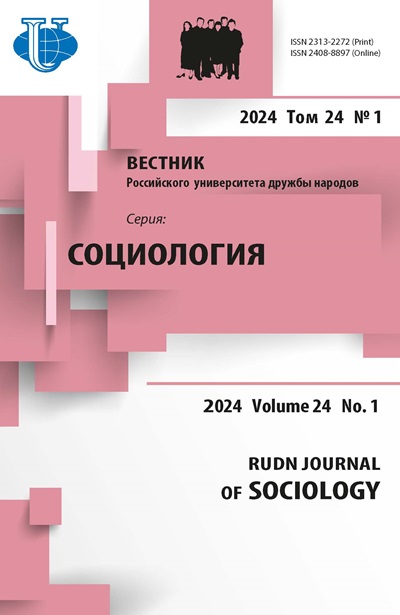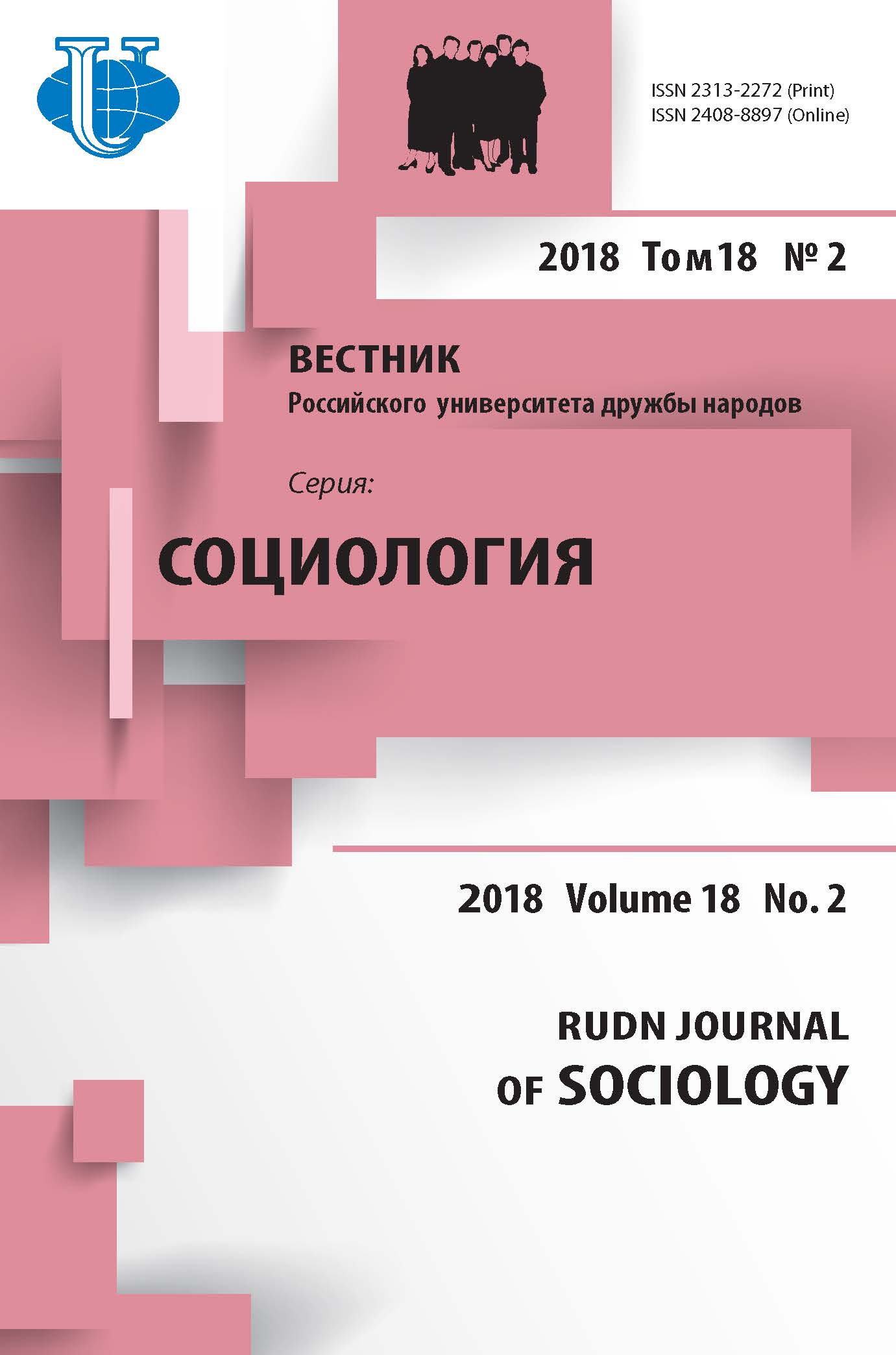Violence as a key manifestation of social problems in Bosnia and Herzegovina
- Authors: Milošević Š.B.1
-
Affiliations:
- University of East Sarajevo
- Issue: Vol 18, No 2 (2018)
- Pages: 334-344
- Section: Surveys, experiments, case studies
- URL: https://journals.rudn.ru/sociology/article/view/18457
- DOI: https://doi.org/10.22363/2313-2272-2018-18-2-334-344
Cite item
Full Text
Abstract
The term ‘social problem’ was first introduced as a synonym for ‘illnesses’ under unfavorable social-economic conditions [9]. Social problems are considered by social science when it comes to their negative consequences for satisfying one’s needs and self-realization [15]. According to R. Metron and R. Nisbet, social problems are “the result of mismatch between social values and reality; the effect of social causes that are considered unfavorable; they can be manifest and latent; they have social consequences and determine planned and meaningful social actions” [10. P. 156]. The article focuses on the social problems in a part of Bosnia and Herzegovina (B&H) - the Republic of Srpska - to prevent and minimize them even in their most sociopathic forms. The empirical study was conducted on the sample of 220 respondents (105 male and 113 female) from October 2016 to January 2017 in seven municipalities of the Republic of Srpska as a part of B&H. The author wanted to estimate the respondents’ awareness of certain notions related to the pathological sexual assaults (paraphilias) and on the level of domestic violence in particular against women. The study combined empirical and theoretical parts to test the authors’ hypotheses. Among them an assumption that many respondents do not know the meaning and are not in any other ways familiar with different types of paraphilias. Another author’s assumption was that women of the Republic of Srpska are more exposed to specific types of violence, which is still not enough discussed in public due to the traditional communicative and social barriers. The third author’s hypothesis was that women are more exposed to psychological and physical violence due to unfavorable social-economic conditions. To prove this the author used statistical data to assess the relationship of different features of the sample and reveal the factors affecting the development and changes in the above mentioned social problems. If the factors considered in the article are not publicly recognized and discussed the current situation will lead to the highly deviant (delinquent) behaviour that will turn into a socially acceptable model and determine serious negative consequences for the society.
About the authors
Šošo BČ Milošević
University of East Sarajevo
Email: milosevic_biljana@yahoo.com
Alekse Šantića St., 1, Pale, 71000, Republic of Srpska
References
- Aleksić J., Djorgović J. Priručnik za medijsko izvještavanje o nasilju u porodici i nasilju nad ženama [Handbook for the Media Coverage of Domestic Violence and Violence Against Women]. Beograd: Uprava za rodnu ravnopravnost, Ministarstvo rada i socijalne zaštite; 2011 (In Serbian).
- Bandura A. Teorija socijalnog učenja [Social Learning Theory]. Englewood Cliffs: Prentice Hall; 1977 (In Serbian).
- Bandura A., Ross D., Ross S.A. Prenos agresije putem imitacije agresivnih modela [Transmission of aggression through imitation of aggressive models]. Journal of Abnormal and Social Psychology. 1961: 63: 575-582 (In Serbian).
- Bošković M. Socijalna patologija [Social Pathology]. Novi Sad: Pravni fakultet; 2007 (In Serbian).
- Branković S. Metodologija društvenih istraživanja [Social Research Methodology]. Beograd: Zavod za udzbenike; 2014 (In Serbian).
- Bukelić J. Droga u školskoj klupi [Drugs in School Desk]. Beograd: Velarta; 2002 (In Serbian).
- Dragišić-Labaš S.Alkoholizam u porodici i porodica u alkoholizmu [Alcoholism in the Family, and Families in Alcoholism]. Beograd: Čigoja; 2012 (In Serbian).
- Dunn Jay I. Social and community psychiatry and individual social consciousness. Journal of Analytical Psychology. 1968: 13 (2): 146-154.
- Jakovljević V. Socijalna patologija [Social Pathology]. Beograd: Naučna knjiga; 1971 (In Serbian).
- Jugović A. Teorija društvene devijantnosti [Theory of Social Deviance]. Beograd: Partenon; 2013 (In Serbian).
- Kron L.J. Parafilije: definicija, etiologija, tipovi, klinički tretman i prognoze [Paraphilias: definition, etiology, types, clinical treatment and prognosis]. Zbornik Instituta za kriminološka i sociološka istraživanja. 2009: XXVIII (1-2): 117-127 (In Serbian).
- Ljubičić M. Porodica i delinkvencija [Family and Delinquency]. Beograd: Čigoja; 2011 (In Serbian).
- Merton R.K., Nisbet RA. Contemporary Social Problems. New York: Hartcourt Brace; 1971.
- Mihić I., Zotović M., Jerković I. Struktura i socijalno-demografska obilježja obiteljskog okruženja u Vojvodini [Structure and social-demographic characteristics of the family environment in Vojvodina]. Psihologija. 2009: 39 (2): 297-312 (In Serbian).
- Milosavljević M. Devijacije i društvo [Deviations and Society]. Beograd: Draganic; 2003 (In Serbian).
- Rock P. Deviant Behaviour. London: Hutchinson University Library; 1973.
- Study of the Violence against Women in Bosnia and Herzegovina. Sarajevo: Agencija za ravnopravnost polova. http://bhas.ba/tematskibilteni/BHAS_Zene_Muskarci_BH.pdf.














